
The Atari 5200 SuperSystem or simply Atari 5200 is a home video game console introduced in 1982 by Atari, Inc. as a higher-end complement for the popular Atari Video Computer System. The VCS was renamed to the Atari 2600 at the time of the 5200's launch. Created to compete with Mattel's Intellivision, the 5200 wound up a direct competitor of ColecoVision shortly after its release. While the Coleco system shipped with the first home version of Nintendo's Donkey Kong, the 5200 included the 1978 arcade game Super Breakout which had already appeared on the Atari 8-bit computers and Atari VCS in 1979 and 1981 respectively.

The Commodore 64, also known as the C64, is an 8-bit home computer introduced in January 1982 by Commodore International. It has been listed in the Guinness World Records as the highest-selling single computer model of all time, with independent estimates placing the number sold between 12.5 and 17 million units. Volume production started in early 1982, marketing in August for US$595. Preceded by the VIC-20 and Commodore PET, the C64 took its name from its 64 kilobytes(65,536 bytes) of RAM. With support for multicolor sprites and a custom chip for waveform generation, the C64 could create superior visuals and audio compared to systems without such custom hardware.

The Atari 8-bit computers, formally launched as the Atari Home Computer System, are a series of 8-bit home computers introduced by Atari, Inc. in 1979 with the Atari 400 and Atari 800. It is the first home computer architecture with coprocessors, enabling more advanced graphics and sound than most of its contemporaries. Video games are key to its software library, and the 1980 first-person space combat simulator Star Raiders is considered the platform's killer app.

The VIC-20 is an 8-bit home computer that was sold by Commodore Business Machines. The VIC-20 was announced in 1980, roughly three years after Commodore's first personal computer, the PET. The VIC-20 was the first computer of any description to sell one million units. It was described as "one of the first anti-spectatorial, non-esoteric computers by design...no longer relegated to hobbyist/enthusiasts or those with money, the computer Commodore developed was the computer of the future."

Atari BASIC is an interpreter for the BASIC programming language that shipped with Atari 8-bit computers. Unlike most American BASICs of the home computer era, Atari BASIC is not a derivative of Microsoft BASIC and differs in significant ways. It includes keywords for Atari-specific features and lacks support for string arrays.

The TI-99/4 and TI-99/4A are home computers released by Texas Instruments in 1979 and 1981, respectively. The TI-99 series competed against home computers such as the Apple II, TRS-80, Atari 400/800, and VIC-20.
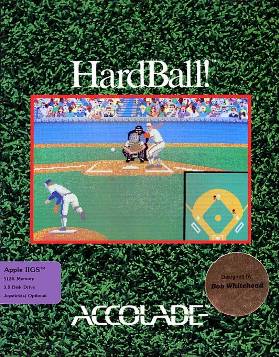
HardBall! is a baseball video game published by Accolade. Initially released for the Commodore 64 in 1985, it was ported to other computers over the next several years. A Sega Genesis cartridge was published in 1991. HardBall! was followed by sequels HardBall II, HardBall III, HardBall IV, HardBall 5, and HardBall 6.
Optimized Systems Software (OSS) was a company that produced disk operating systems, programming languages with integrated development environments, and applications primarily for Atari 8-bit computers. The founders of OSS previously developed Atari DOS, Atari BASIC, and the Atari Assembler Editor for Atari, Inc., and many OSS products are substantially improved versions. OS A+ and DOS XL are based on Atari DOS. BASIC A+, BASIC XL, and BASIC XE are based on Atari BASIC. EASMD and MAC/65 are modeled on the Atari Assembler Editor. Action! is an ALGOL-inspired compiled programming language with an integrated full-screen editor. OSS also sold some software for the Apple II.

ANALOG Computing was an American computer magazine devoted to Atari 8-bit computers. It was published from 1981 until 1989. In addition to reviews and tutorials, ANALOG printed multiple programs in each issue for users to type in. Almost every issue included a machine language video game—as opposed to Atari BASIC—which were uncommon in competing magazines. Such games were accompanied by the assembly language source code. ANALOG also sold commercial games, two books of type-in software, and access to a custom bulletin-board system. After the Atari ST was released, coverage of the new systems moved to an ST-Log section of the magazine before spinning off into a separate publication under the ST-Log name.

Video Olympics is a video game programmed by Joe Decuir for the Atari 2600. It is one of the nine 2600 launch titles Atari, Inc. published when the 2600 system was released in September 1977. The cartridge is a collection of games from Atari's popular arcade Pong series. A similar collection in arcade machine form called Tournament Table was published by Atari in 1978.
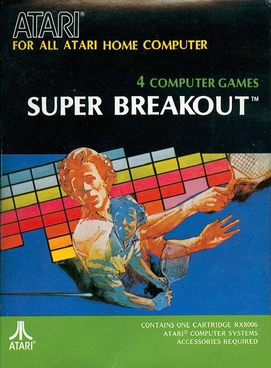
Super Breakout is a sequel to the 1976 video game Breakout released in arcades in September 1978 by Atari, Inc. It was written by Ed Rotberg. The game uses the same mechanics as Breakout, but allows the selection of three distinct game modes via a knob on the cabinet—two of which involve multiple, simultaneous balls in play. Both the original and sequel are in black and white with monitor overlays to add color. It was distributed in Japan by Namco and Esco Trading.
Atari 8-bit computer peripherals include floppy drives, printers, modems, and video game controllers for Atari 8-bit computers, which includes the 400/800, XL, XE, and XEGS.

Many games, utilities, and educational programs were available for Atari 8-bit computers. Atari, Inc. was primarily the publisher following the launch of the Atari 400/800 in 1979, then increasingly by third parties. Atari also distributed "user written" software through the Atari Program Exchange from 1981 to 1984. After APX folded, many titles were picked up by Antic Software.

The Atari 2600 hardware was based on the MOS Technology 6507 chip, offering a maximum resolution of 160 x 192 pixels (NTSC), 128 colors, 128 bytes of RAM with 4 KB on cartridges. The design experienced many makeovers and revisions during its 14-year production history, from the original "heavy sixer" to the Atari 2600 Jr. at the end. The system also has many controllers and third-party peripherals.
Happy drives are series of disk drive enhancements for the Atari 8-bit and Atari ST computer families produced by a small company Happy Computers. Happy Computers is most noted for the add-in boards for the Atari 810 and Atari 1050 disk drives, which achieved a tremendous speed improvement for reading and writing, and for the ability to "back up" floppies. Happy's products were among the most popular Atari computer add-ons. They were still in use and active in the aftermarket as of 2009.
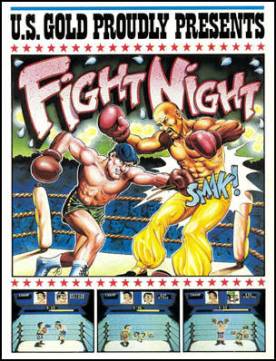
Fight Night is a boxing video game developed by Sydney Development Corporation and published by Accolade in the United States and by U.S. Gold in the United Kingdom. It was initially released in 1985 for the Apple II, Atari 8-bit family, and Commodore 64. The game includes both a single player mode and multiplayer mode. It includes the ability to customize the player's boxer. In total, there are five boxers to beat.
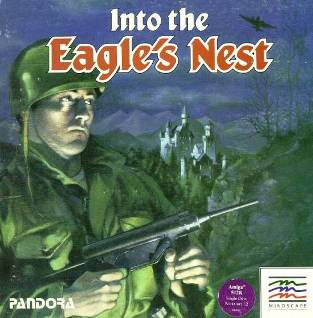
Into the Eagle's Nest is a video game developed by Pandora and published for Amiga, Amstrad CPC, Apple II, Atari 8-bit computers, Atari ST, Commodore 64, IBM PC compatibles, and ZX Spectrum starting in 1987.

Wayout is a 3D first-person perspective video game programmed by Paul Allen Edelstein and published for the Atari 8-bit computers in 1982. It was released for the Apple II and Commodore 64 in 1983. Wayout is among the first maze games to offer full 360 degree 3D perspective and movement, and its graphics were considered state-of-the-art upon its release. There were many pseudo-3D maze games at the time, but they used a fixed perspective and limited the player to four orientations.
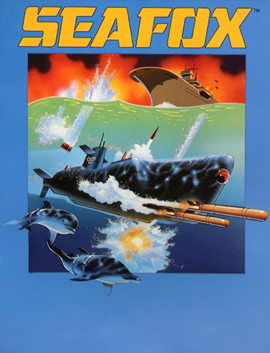
Seafox is a shoot 'em up written by Ed Hobbs and published by Broderbund in 1982 for the Apple II and as a cartridge for Atari 8-bit computers. A VIC-20 port, also on cartridge, was released in 1983.
















